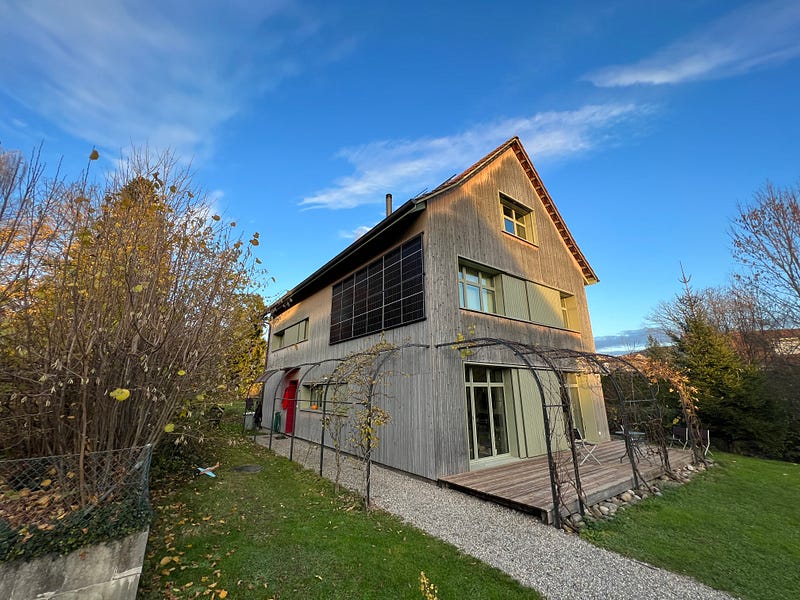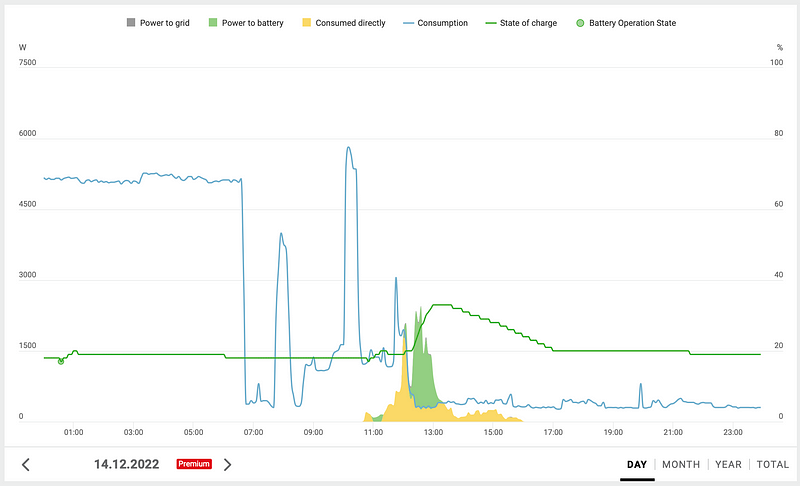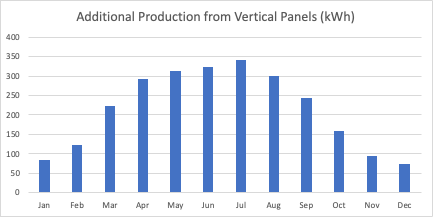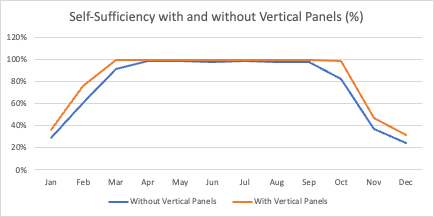Harnessing Vertical Solar Panels: A Step Towards Energy Independence
Written on
Chapter 1: Introduction to Vertical Solar Panels
Vertical solar panels are not solely for remote mountain cabins; they can be effectively utilized on any residential structure. Surprisingly, these panels perform admirably even during the darkest months of the year.


These vertical installations can significantly increase solar self-sufficiency in winter, as they are better at capturing the low-angled sun compared to traditional roof-mounted panels. Additionally, they remain operational even when covered with snow.
As previously discussed, achieving self-sufficiency in a modern single-family home is attainable, even with electric vehicles, in temperate regions like Switzerland. Currently, my setup allows for about 70% self-sufficiency throughout the year, and the addition of vertical panels is expected to elevate this figure to 80%.
The Setup
Our home was constructed on a green field in 2012, with a strong emphasis on energy efficiency and solar independence. Since day one, it has featured a Drexel+Weiss Aerosmart X2 heating and ventilation system paired with a ground heat pump, which has maintained low heating energy consumption (approximately 1.2 kW on full power during cold winter days).
Over the years, we have incrementally added the following systems based on our energy usage:
- 8 kWp east-west solar panels on the carport
- 14 kWp east-west solar panels on the house
- 4.8 kWp east-west solar panels on the facade
- 12 kWh Fronius Solar Battery
- Two Tesla Model 3 vehicles, each with a 75 kWh battery
A Loxone building management system oversees major energy consumers (vehicles, washing machine, heating) while factoring in solar power availability, battery charge levels, and seasonal variations.
Production Data
From November 15, 2022, to December 15, 2022, the vertical solar panels generated the following energy:
- Eastern facade: 19.68 kWh
- Western facade: 17.71 kWh
From December 16, 2022, to January 15, 2023, the production was as follows:
- Eastern facade: 13.46 kWh
- Western facade: 12.14 kWh
Although a total production of 62.99 kWh may seem modest, it’s essential to consider that this timeframe encompasses some of the year's darkest days. Furthermore, during the second week of December, snow covered the roof panels, resulting in zero energy production from them. On that day, the vertical panels alone produced approximately 3 kWh.

In the second week of January, we experienced several gloomy and rainy days, limiting sunlight even further.
Strategic Insights
One might argue that the contribution of vertical panels to winter energy production is minimal, and that’s a valid point. However, in energy engineering, there are no simple solutions.
Using the Photovoltaic Geographical Information System and the aforementioned characteristics, projections indicate that vertical panels should generate additional energy as illustrated below:

This additional output is expected to boost annual self-sufficiency by 10 percentage points. Moreover, we can anticipate two extra months of achieving 100% self-sufficiency (March and October).

Importantly, achieving self-sufficiency in October and March will not only mitigate power shortages towards the winter's end but will also provide financial benefits as energy prices become more seasonal.
Tactical Insights
While the previous analysis was strategic, the tangible benefits are challenging to gauge with just two months of data. Nonetheless, we recorded an additional 63 kWh of solar energy during the winter weeks from November 15, 2022, to January 15, 2023. How does this translate for our energy-efficient home?
- An extra 300 km of range for one Tesla Model 3 (our monthly driving average is around 1,500 km).
- Approximately 50 hours of operation for our Drexel+Weiss AeroSmart X2 heating/ventilation system (typically running for 180-240 hours monthly, depending on outside temperatures).
In total, we consumed 1,785 kWh of electricity during this period, producing 600 kWh, resulting in 34% self-sufficiency. Without the vertical panels, production would have been 537 kWh, leading to a 30% self-sufficiency rate.
To reiterate: there are no simple solutions in energy engineering. However, the choice remains yours: would you prefer an additional 300 km of electric vehicle range or rely solely on a bicycle during those frigid, dark winter weeks?
Growing a company in challenging times is akin to running a marathon. As a tech entrepreneur, active reserve officer, and father of three, I offer practical insights on entrepreneurship and resilience for all aspects of life. My advice is straightforward and no-nonsense, as I understand the busy life of entrepreneurs.
When I find time to unwind, I seek inspiration in the stunning mountains surrounding Zermatt.
Join over 100 subscribers to receive my weekly newsletter for resilient entrepreneurs every Friday afternoon!
Get my eBook to ensure you never find yourself in the dark as a homeowner!
Chapter 2: Enhancing Your Solar Knowledge
This video, "Excess Supply Of Solar Panels! DIY Your System Now! Massive Changes Coming!" discusses the current solar panel surplus and how to take advantage of it by building your own system.
In "Chapter 8 Homework Solutions MyMathLab - YouTube," you'll find detailed solutions that can enhance your understanding of mathematical concepts relevant to energy calculations.